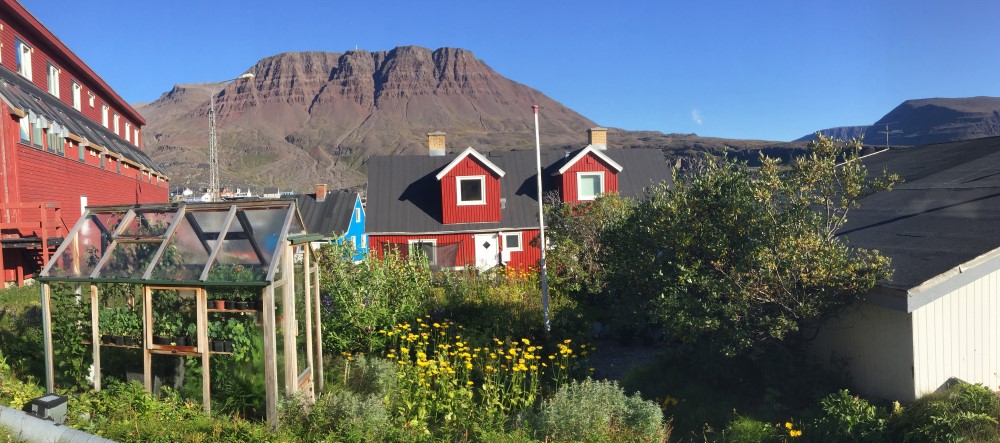
BO ELBERLING, 2020
Greenland’s cold climate and rocky landscapes with soils poor in organic matter are not the obvious place for horticulture. Nevertheless, the history of horticulture goes back to the Danish-Norwegian missionary Hans Egede, who in front of his residence in Nuuk established the first garden in 1728. During the 1700s, kitchen gardens were built in front of the homes of the Europeans, also at the Moravian mission stations in the South Greenland fjords, where the climate was more favourable than in the coastal colonies. The yield was modest, but an important contribution in the fight against scurvy caused by the vitamin C-deficient diet at the time. Well-fertilised soil from old camp sites and house plots as well as soil from bird colonies was added to the thin topsoil. Manure and latrine were also used as fertiliser. The garden plots were fenced in by soil ridges and picket fences to provide shelter and keep free-range livestock out.
The gardeners did many experiments with European herbs such as lettuce, spinach, chervil and carrots. Beets and kale that could be stored for the winter fared the best. The introduction of cold frames and greenhouses during the 19th century extended the growing season and resulted in increased interest in horticulture. Gradually, room was also made for lawns, flower beds, gravel paths and gazebos, and the gardens started being used as outdoor living spaces.
Greenlanders had no tradition of horticulture, except in Igaliku where animal husbandry and horticulture had been common since the late 18th century. This changed after an active effort by the sheep farming station established in Qaqortoq in 1915. Sheep farmers grew vegetables, primarily turnips and potatoes. In 1930, the first bilingual guide on plant farming was published based on many years of experience in planting gardens, fertilising, sowing and treating a number of garden plants that thrived well in Greenland.
In 1971, a new bilingual guide made another attempt at promoting horticulture, and since the 1990s garden associations have been established in Qaqortoq and Nuuk. Today’s urban gardens are mainly flower gardens supplemented by a couple of cold frames for vegetables. The research station has provided robust perennials, including wolfsbane (Aconitum), leopard’s bane (Doronicum), nootka lupine and aven (Dryas), which are now supplemented with imported perennials from Iceland. In addition, there is a wealth of annual summer flowers as well as rose root, dwarf fireweed and angelica retrieved from nature.
As something new, berry bushes, small trees and woody shrubs are also seen in the gardens, e.g. Alaska willow, balsam poplar, northern mountain ash, green alder, and conifers such as Engelmann spruce, juniper and Siberian larch.
Further reading
- Agriculture in Greenland
- Biodiversity and nature management
- Hans Egede and the work for the mission service
- Locations with agriculture and sheep farming
- The climate in Greenland
- The ice-free landscapes
Read more about Nature and landscape in Greenland
